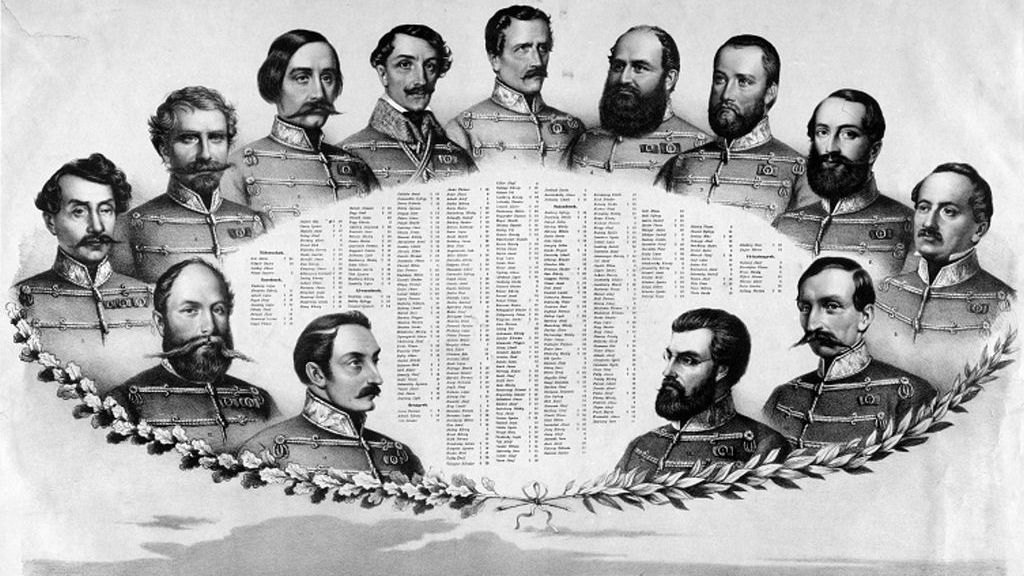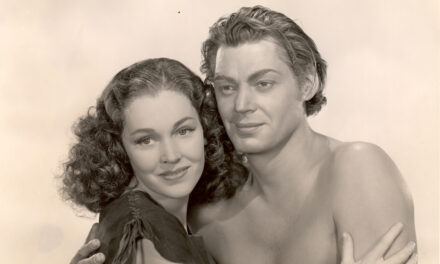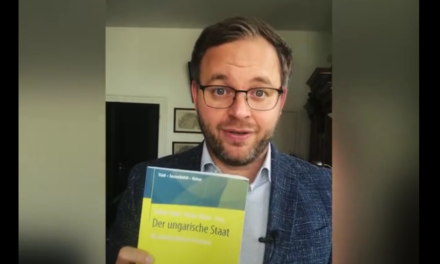"A nation that does not know its past does not understand its present, and cannot create its future!"
Europe needs Hungary... which has never let itself be defeated.
From the fall of the freedom struggle through the martyrdom of the Arad martyrs to the illegal execution of Count Lajos Batthyány.
The fate of the freedom struggle after the capture of Buda
Hungary swam in euphoria after the recapture of Buda - May 21, 1849 - and the victorious battles of the war of independence. At the beginning of May 1849, the second independent Hungarian government was established under the leadership of Bertalan Szemere. Even then, the governments of Western Europe - many of which were - were slandering democracy, yet they watched the successes of the Hungarians with concern. When Francis Joseph asked the Russian Tsar for military help, he was supported by both France and the United Kingdom. They were afraid of Russian expansion, and they saw in the Habsburg Empire the power that could ensure European balance.
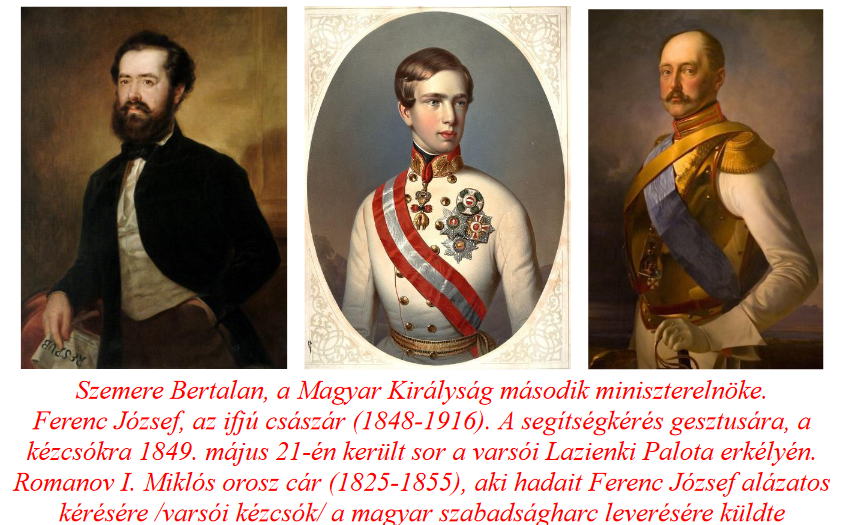
Later, during the Crimean War (1853-1856), the Habsburg ruler did not reciprocate the fraternal help when it should have. Therefore, the tsar rightly resented Ferenc József. After the Warsaw handshake gesture, the Russian tsar sent an army of 200,000 people to crush the Hungarian freedom struggle. The Austrian force consisted of 170,000 men, which was led by Field Marshal Haynau against our country. The Hungarians were also able to field an experienced but tired army of 170,000 men. On the one hand, Kossuth wanted to mobilize the entire country, and on the other hand, he wanted to come to an agreement with the nationalists. Unfortunately, both initiatives were delayed.

Ivan Paskevich, commander-in-chief of the tsarist armies.
The Hungarian government wanted to come to an agreement with the Romanian insurgents. Negotiations were already underway with their leader, Avram Iancu, when the Romanian free troops murdered a Hungarian delegation and decimated the population of Abrudbánya. On July 6, Pál Vasvári, one of the leaders of the March youth, was killed. A few days earlier, Áron Gábor, the master gunsmith from Székely, was killed by Russian weapons.
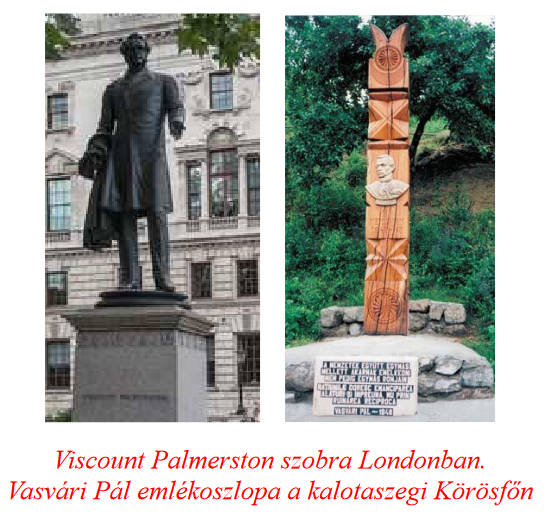
Palmerston, British foreign minister, played a significant role in the events of the 1848/1849 Hungarian War of Independence. "Master Pál", as the Hungarians called him, the number one diplomat of the "cradle of democracy" gave his blessing to the Russian intervention. For the intervention of the Russian Tsar, whom the West was so afraid of. The two-faced nature of English democracy was already evident then. Because of his high degree of independence, Palmerston was later replaced, all the more so because Queen Victoria considered the Foreign Office a royal prerogative.
Palmerston is credited with the oft-quoted saying that "Although the Hungarians are right, let's get rid of them quickly." However, the original Palmerston saying reads: "England has no eternal enemies, England has interests." However, the point is the same, the United Kingdom took a stand in favor of crushing the Hungarian freedom struggle.
Military defeats
By the summer of 1849, the country was almost completely exhausted. The more than double overpower, the enemy's better supply of munitions, the rested and trained tsarist army made the situation hopeless. Sharp debates raged in the General Staff of the Honvéd until they finally agreed on the construction of the Arad-Temesvár-Szeged defense line. Görgey had a different opinion, and on July 2, 1849, he collided with Haynau near Komárom. However, he suffered a serious head injury in the battle and was unable to perform his duties for days.
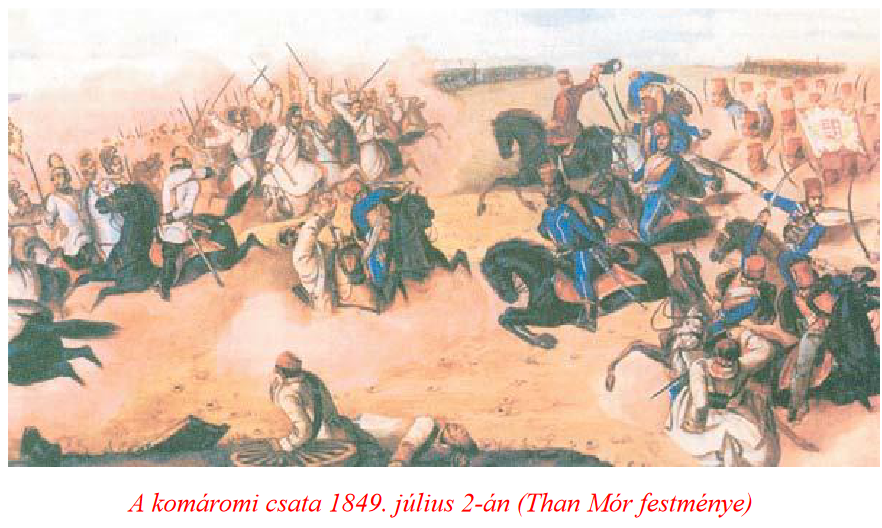
While Görgey headed south from Komárom and reached Szeged at the head of his 30,000 soldiers, during this time he tied up Paskkevics' army of 120,000. György Klapka remained in Komárom at the head of 20,000 men. The fact that Henrik Dembinszky, a general of Polish origin, marched from Szeged to Timișoara instead of Arad despite the order indicates the contradictions and headlessness of the Hungarian military leadership. The generals protested, and Lieutenant General Antal Vetter, for example, resigned because of this.

Dembinszky's march towards Timisoara was a big tactical mistake. The aimless march disintegrated the already poorly equipped army. Kossuth, who arrived at the camp on August 9, replaced Dembinszky with immediate effect and appointed József Bem, who arrived here from Transylvania, as commander-in-chief. Bem's army of 50,000 clashed with Haynau's army of 30,000. The battle started favorably in favor of the Hungarians, but the momentum was broken because the Hungarian cannons fell silent. It turned out that Dembinszky had sent the ammunition elsewhere. Bem's army could not recover from the failure. The defeat at Timisoara was fatal.

The laying down of arms in Lökur
Görgey, at the head of his troops, arrived in Arad on the day of the defeat in Temesvár. He immediately assessed that further fighting was hopeless, it would only involve unnecessary human sacrifice. On August 11, 1849, Kossuth and Görgey had a sharp debate about this situation in Arad Castle. Kossuth argued in favor of continuing the fight, while Görgey argued against it. Some of the ministers resigned, as a result of which Kossuth could no longer govern. Kossuth transferred civil and military power to Görgey, although he did not do so with a good heart, he was forced to do so.
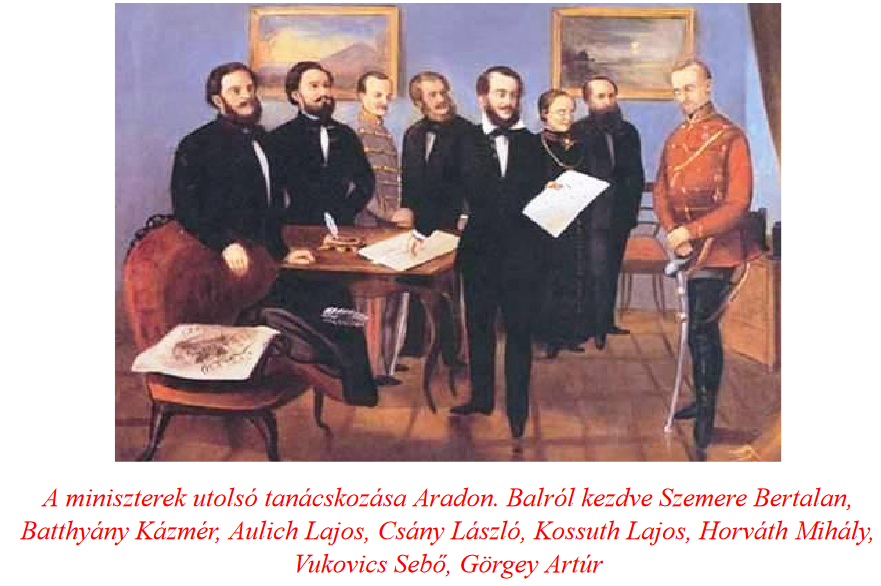
After that, Görgey became the country's leader for two days - as we read in many places, the country's dictator. He told the war council that he would lay down his arms only before the Russians and unconditionally. The council of war unanimously accepted the proposal, but historians and researchers of posterity describe this decision as treason. With this authorization, Görgey laid down his arms in front of the Russian general Rüdiger on August 13, 1849 near Arad, under Világos Castle. The fact, and there can be no dispute about this, is that he saved the lives of many thousands of Hungarian soldiers.
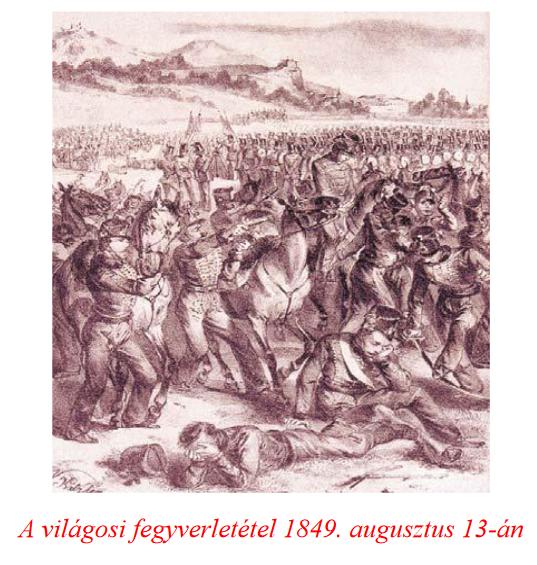
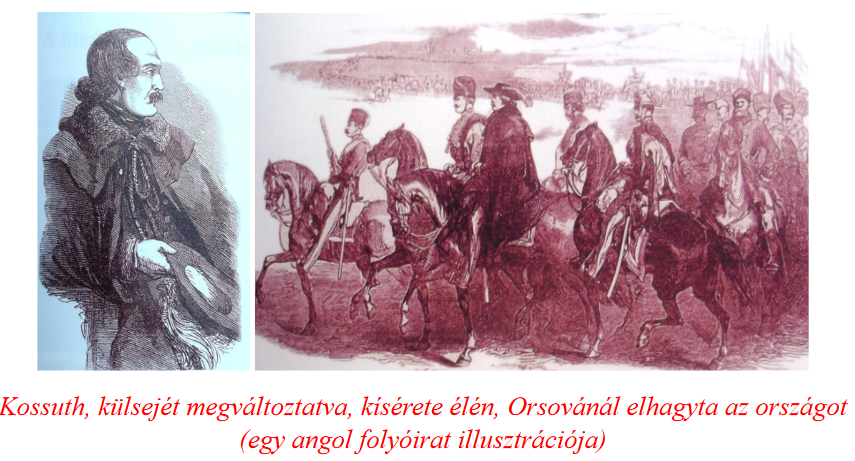
Was Görgey a traitor or a savior of the homeland?
In his resignation statement, Kossuth realistically explained that he would hand over power to Görgey in the given political and military situation. In his last letter, he explained that "I expect from the general, and I hold him responsible before God, the nation and history, that he uses this power to the best of his ability to save the national life of our poor country, benefit it and secure its future. Be a believer of your country, and may God guide your steps."
This was followed by his letter to The Nation, which begins as follows. "After the unfortunate struggles with which God has visited this nation, there is no longer any hope of continuing the struggle of self-defense against the united Austrian and Russian great powers with the hope of success."
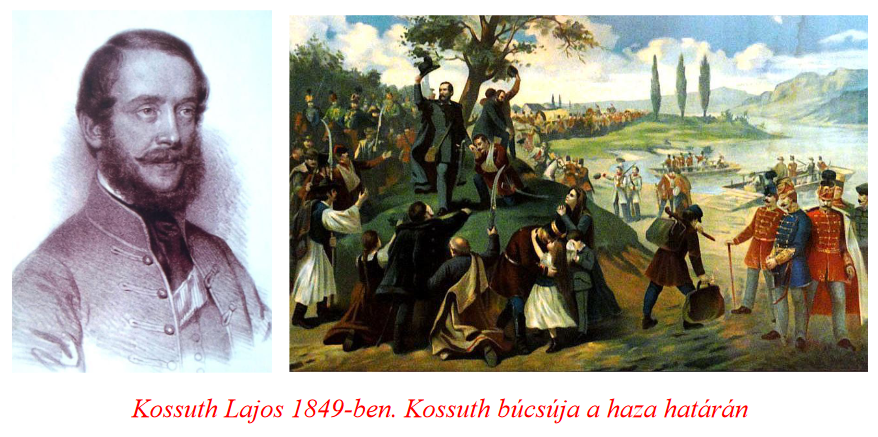 The very next day, on August 12, when Kossuth arrived in Lugos, Kossuth wrote another letter to Görgey, in which he called him a traitor and labeled him the Judas of the nation, which has been the subject of debates for decades and even to this day.
The very next day, on August 12, when Kossuth arrived in Lugos, Kossuth wrote another letter to Görgey, in which he called him a traitor and labeled him the Judas of the nation, which has been the subject of debates for decades and even to this day.
Along with Kossuth, Haynau also considered Görgey a traitor, but he for a completely different reason. Because he laid down his arms not in front of the emperor, but in front of the tsar. In addition to the known facts, Haynau's cruelty and hatred of Hungarians is characterized by the fact that when György Klapka surrendered the castle of Komárom on October 4, the condition was that the defenders could leave freely. Haynau complied with this, although he gritted his teeth, but immediately signed the execution orders in the following days.
The Russians respected the Hungarians as heroes, with whom they scolded Haynau and the Austrians fueled by the desire for revenge. Tsar Miklós did everything to save Görgey and the officers from Haynau's hands. This was only partially achieved according to the conditions of the alliance request. Success was achieved only in the case of Görgey, since he negotiated exclusively with the Russians from the beginning. During the surrender, 11 generals, 1,426 officers, 32,569 soldiers, 144 cannons, and 60 flags fell into the hands of the Russians. The tsar also personally protested against Vienna's cruel sentences. Despite this, the Arad 13 and Prime Minister Count Lajos Batthyány were executed. Tsar Miklós I therefore called the Viennese general staff vile people. As a protest, he did not receive the members of the Austrian diplomacy for months, because they carried out this heinous act.
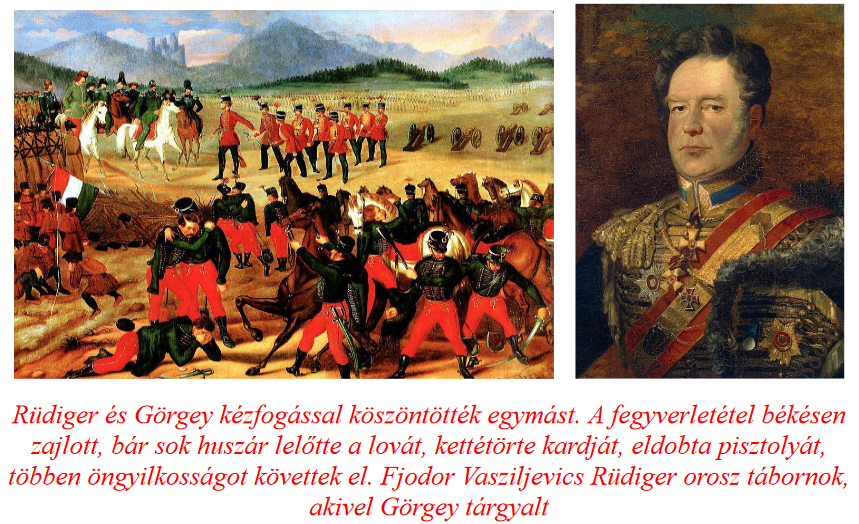
About 50,000 Austrian and nearly 50,000 Hungarian soldiers died in the war. The Russian losses were only 543 dead and 1,670 wounded. Cholera, on the other hand, claimed 11,000 victims on the part of the warring parties.
The Görgey question
There were about a dozen of his 19th-century contemporaries, primarily Hungarian officers, who knew Görgey personally and did not have a good opinion of him. Of the many hundreds, many thousands of officers and ordinary soldiers, this is certainly very few. A 147-page book published in 2023 was whipped up again by the traitor Görgey - isn't he a traitor? question. The authors and researchers of the case are the same ones who, for example, visited Petőfi's grave in Barguzini and believed in the death of our great poet there.
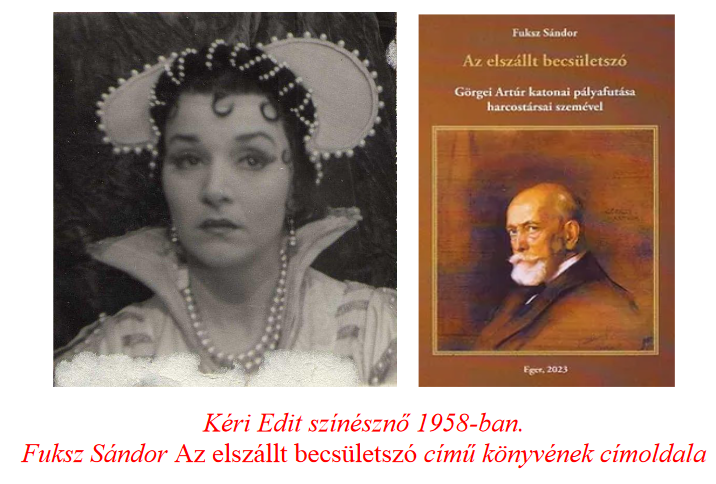
Edit Kéri, the actress born in 1926, should be mentioned first. He became interested in the Görgey theme when he was fifty years old. In 1977, in Nagybecskerek, she and her husband took part in a wreath-laying ceremony at the grave of Arad martyr General Ernő Kiss, and that's when she started working on the freedom struggle and its chief leader. Ki volt Görgei? was completed by 1986. book, which contained serious claims. Among other things, the fact that the "original" Artúr Görgey died of an illness at the age of 21, and in 1839 the Austrians incorporated an Austrian "sleeping spy", born Johann Bláha in 1819, into the ancient Highland Görgey family. This means that Görgey, who was the commander-in-chief of the Hungarian army, is not a traitor, but much worse, a super spy. The question arises! Did Vienna's agents already know in 1839 that there would be a war of independence in Hungary in 1848/1849, and that the treacherous commander-in-chief was being prepared to carry out the fall?
We come across different spellings of Görgey's name. Originally, Artúr Görgey, who was born into a noble family, used the "y" at the end of his name. However, in 1848, due to his sympathy for the bourgeois transformation, he used his name in the form of Görgei. The family accepted this, but they continued to use the form Görgey. (The transformation of the name Jókay into Jókai had a similar story.)
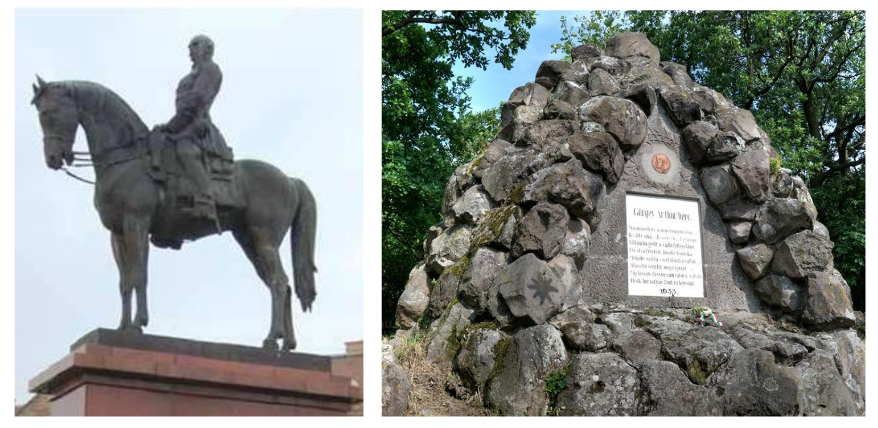
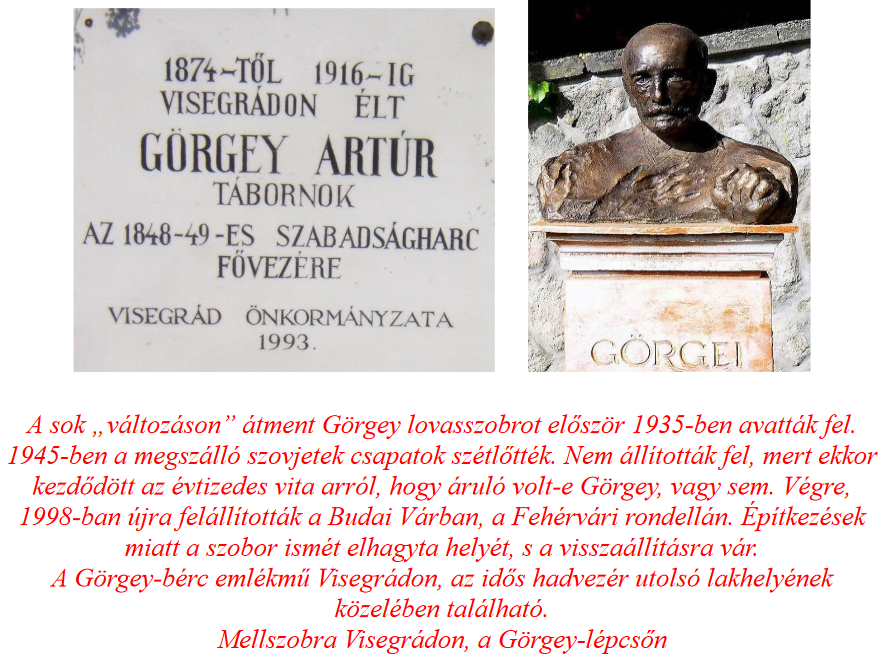
The memory of the Arad martyrs
The reign of terror of Haynau, the hyena of Brescia, is indicated by the quote taken from him: "I am the man who will put things in order. I shoot hundreds dead with a clear conscience, because I am firmly convinced that this is the only way to set a warning example for all future revolutions."
Despite the protests of the tsar and the tsarist generals, Haynau was given a free hand by Ferenc József to commit cruelty. The fate of 120 death sentences, 1,200 strict prison sentences, and tens of thousands of soldiers sentenced to forced conscription outraged European public opinion as well. However, this did not deter the Habsburgs from trampling Hungary into the mud, as it had so often in previous centuries.
October 6 became a day of mourning for our nation, when 13 generals of the army were sentenced to death by the military court in Vienna, and Prime Minister Count Lajos Batthyány was executed in Pest. Earlier, during the War of Independence, the Austrians sentenced to death several officers who had committed minor crimes. Their goal was deterrence.

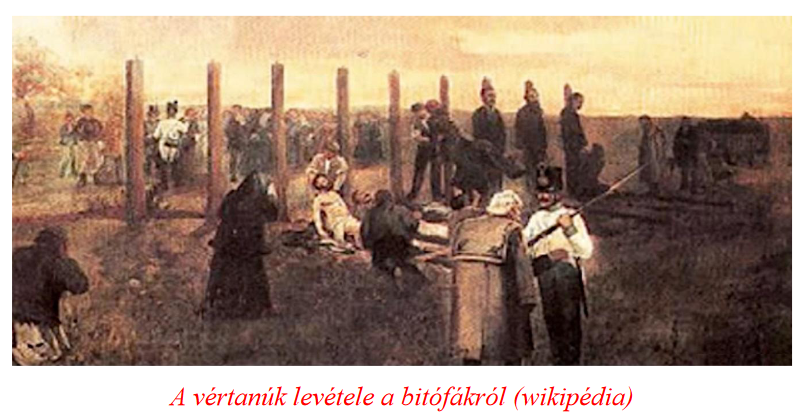
On August 13, 1849, after the laying down of arms, however, a series of severe reprisals became the goal of the court, which Haynau carried out mercilessly. Now they terrified the Hungarians by sending the "main culprits" to death. Haynau stated much earlier, in the spring of 1848, that he did not accept the formation of the Batthyány government. In the given situation, this did not favor the politics of the court, so he ordered the restless Hungarian-hating general to Italy. As the commander of Brescia, he executed dozens of people and caned women in public. This is where the apt epithet "Brescia hyena" comes from. Haynau was the whip of Vienna, but many people in other European states did not forget that.
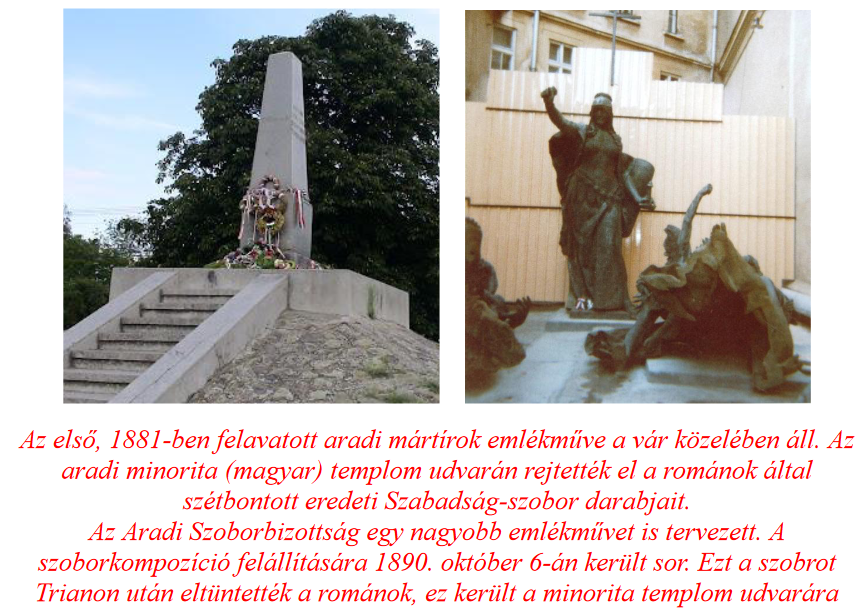
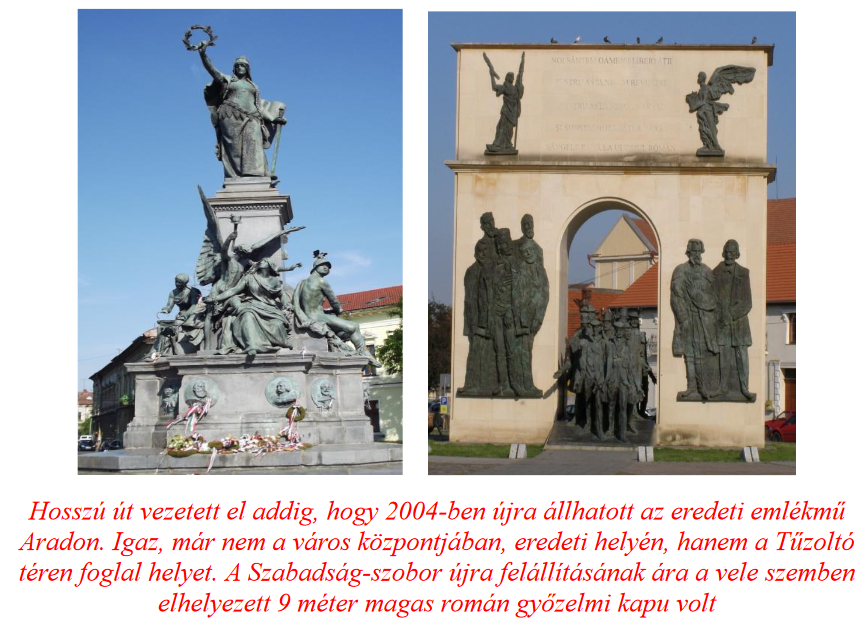
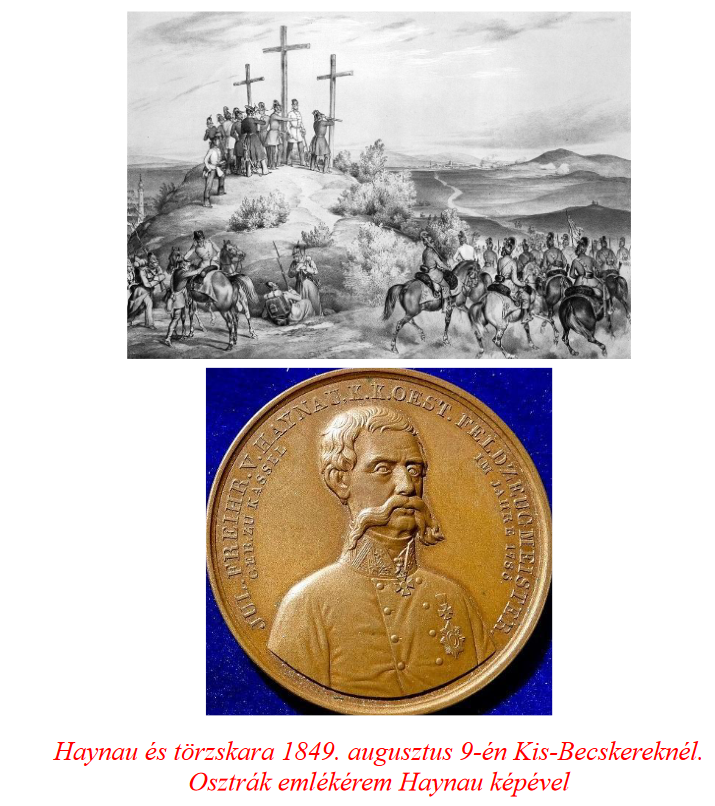
The court (József Ferenc) asked Haynau to open the pre-judgment proceedings before the executions. The chief leader interpreted this as meaning that only the obligation to report after execution applies to him. And Haynau did not grant a pardon, which is how, among other things, the executions in Arad took place.
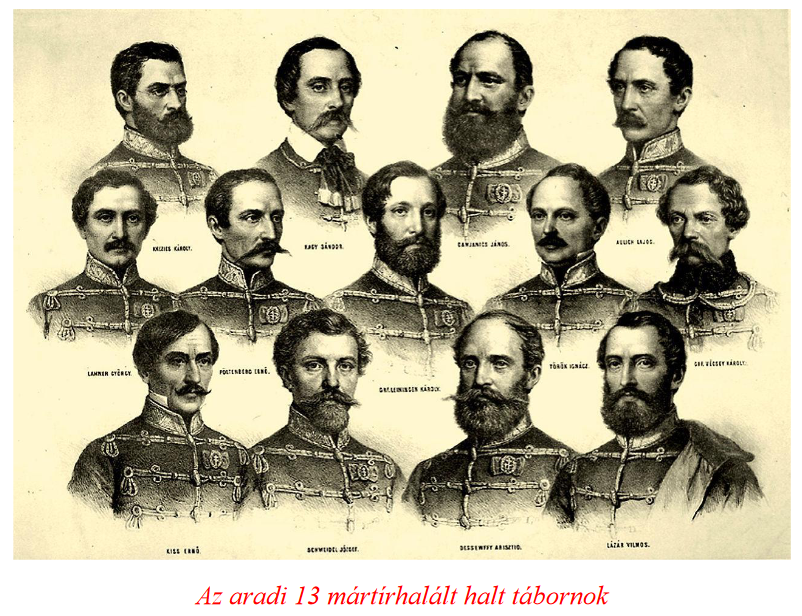
Haynau, the Arad executioner, succeeded in having Count Lajos Batthyány, the first independent Hungarian prime minister, executed in Pest on October 6, 1849, the day of the first anniversary of the Second Vienna Revolution.
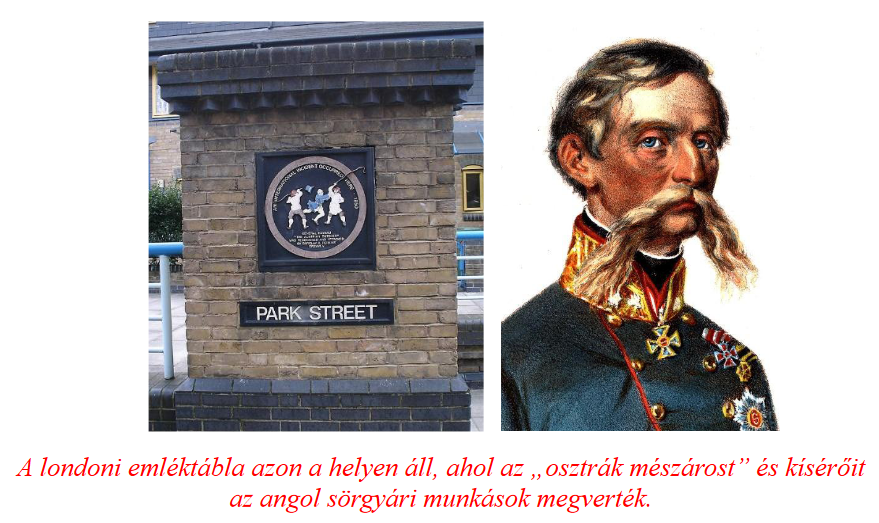
The executioner who didn't particularly care to be hated across Europe
The lords of Vienna did everything to justify their reprisals. Therefore, they tried to blacken the Hungarian uprising, and especially the first freely elected independent prime minister, with all the accusations that justified his execution. Among other things, it was considered a crime that, as Prime Minister, he contacted foreign states, that he issued money without Vienna's permission, that he participated in the organization of the national army. But they attributed to him the outbreak of the Vienna revolution on October 6, 1848, and the death of Minister of War Latour was also blamed on him. The lack of restraint of the Austrians was manifested, among other things, in the fact that Batthyány was found guilty of treason, and therefore, as a common law criminal, he was sentenced to death by hanging.
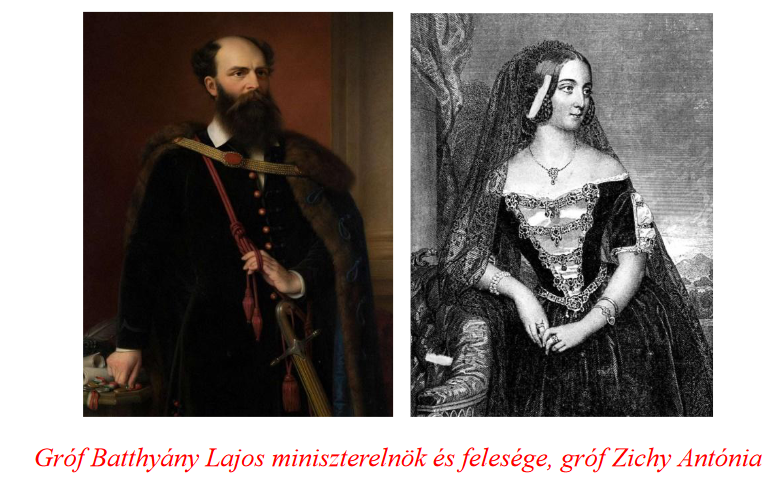
However, on the night before his execution, his wife, Antónia Zichy, visited him, and they talked through the night, meanwhile, when the guards standing close by were not paying attention, the brave wife slipped a leaf-cutting dagger into her husband's hand. After Antónia Zichy left, Batthyány pretended to be asleep and pulled the blanket over her while cutting the veins on her neck and arms. His injuries were not fatal, but the hanging could not be carried out due to heavy bleeding from the neck. The execution was carried out by firing squad, and actually Batthyány wanted to achieve this, so that he would suffer a death worthy of a soldier.
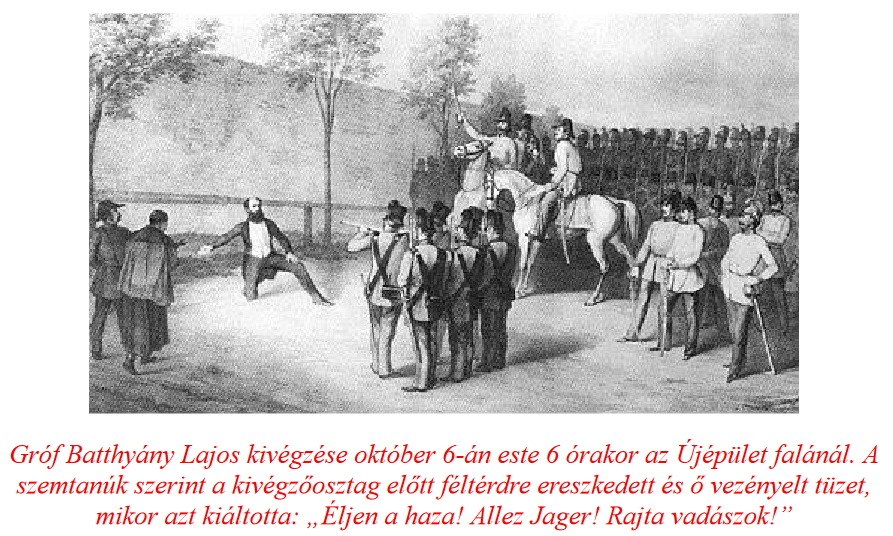
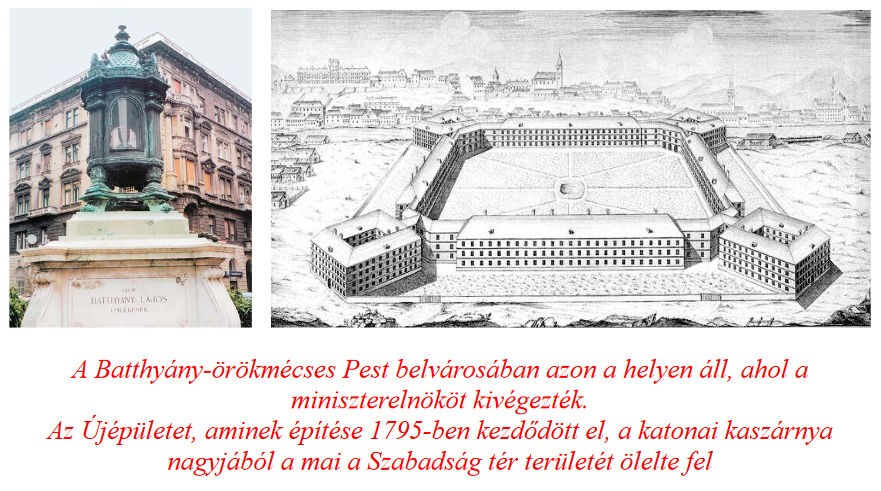 Author: Ferenc Bánhegyi
Author: Ferenc Bánhegyi
Cover image: Wikimedia
The parts of the series published so far can be read here: 1., 2., 3., 4., 5., 6., 7., 8., 9., 10., 11., 12., 13., 14., 15., 16., 17., 18., 19., 20., 21., 22., 23., 24,, 25., 26., 27., 28., 29/1.,29/2., 30., 31., 32., 33., 34., 35., 36., 37., 38., 39., 40., 41., 42., 43., 44., 45., 46., 47., 48., 49., 50., 51., 52., 53., 54., 55., 56., 57., 58., 59., 60., 61. 62., 63., 64., 65., 66., 67.

